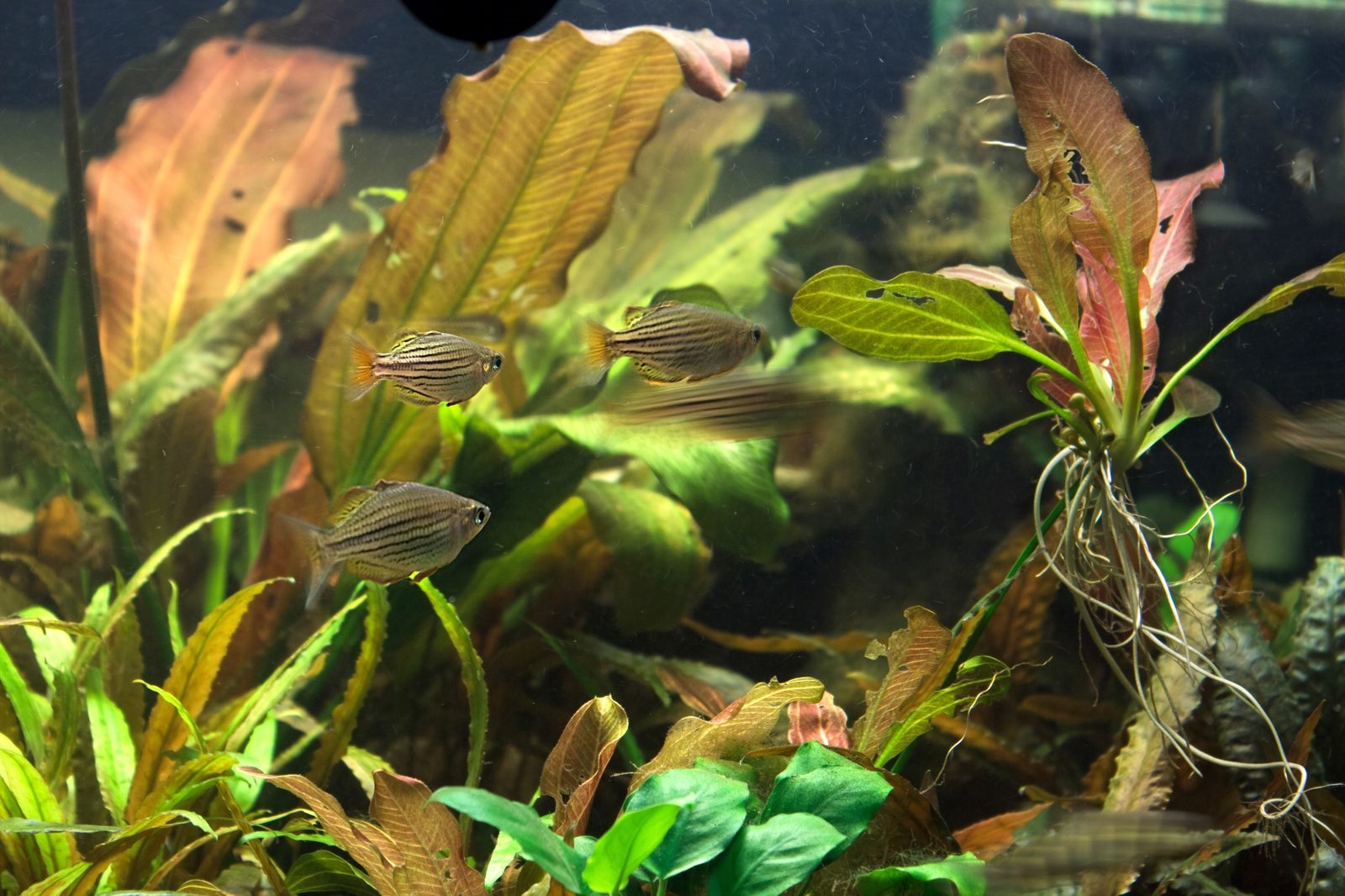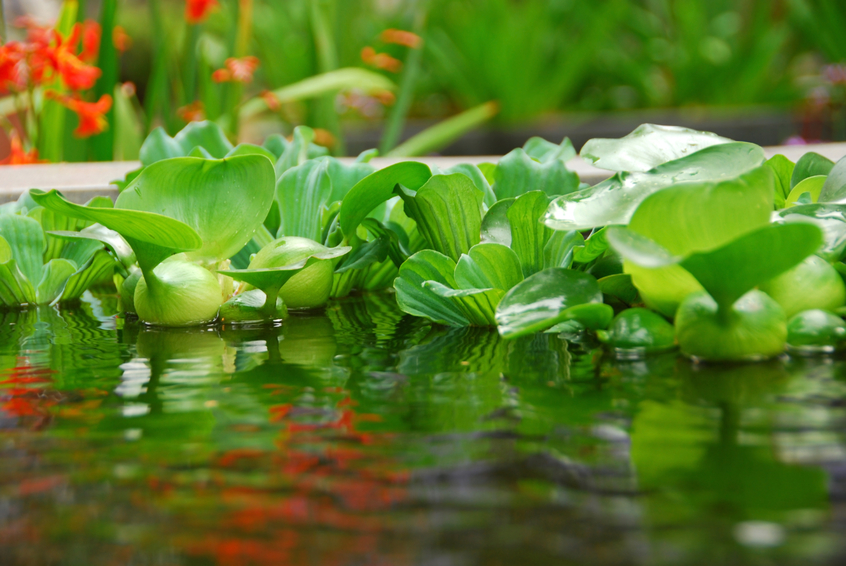Algen Aquarium Bekämpfen

Successful control of aquarium algae is achieved by controlling nitrate levels, as well as limiting exposure to tank light. For their growth, aquarium algae depend on oxygen, light, water and nutrients (mainly nitrate). Therefore, controlling light and nitrates are our best algae control options. Nitrate control is algae control
Controlling Aquarium Nitrate Will Limit Algae's Main Food Source
Nitrate is a natural part of the aquarium's nitrogen cycle, so we can't just aim to eliminate it completely. Follow these guidelines to prevent algae outbreaks by maintaining a low nitrate aquarium
Feed sparingly – only once a day. Supplement your hard work and maintenance efforts with naturally purifying ALGONE… learn more Buy 2, get 1 FREE
Control algae by limiting light
Control and adjust aquarium lighting
Algae are photosynthetic and therefore need light to produce energy (sugar) to feed themselves. Limit the duration of daily lighting (aquarium lamps) to 6-8 hours, depending on the amount of natural light provided by the room. Most natural freshwater habitats are poorly lit, so most aquarium lighting is provided for the benefit of people, rather than fish. With the exception of planted and reef aquariums, we recommend lighting for as short as 4 hours per day.
Algae
A low level of organic pollution, healthy and well-developed plants and an appropriate amount of fish (neither too high nor too low). Creating strong competition for algae by promoting healthy, well-developed plants is truly the best cure and easiest way to fight algae. However, the supply of the other main nutrients and trace elements is also crucial if you want plants to grow well. Of course, lighting, plants, and animals should all be in tune with the fertilizer regimen. Intense light, slow-growing plants, and lots of nutrients are a combination that gives algae a huge advantage. A frequent water change of around 30% each week is also a good way to control algae, as you remove pollutants and add fresh plant nutrients. As tests with the Dennerle line of feeds have shown, high quality, natural feeds can help reduce the algae population. With longer photoperiods, plant photosynthetic systems can become inactive or even suffer damage. Green weapons against algaeWhen we set up a new aquarium, we have a large choice: more than 200 species of aquarium plants in all shapes and colors grow in Dennerle's greenhouses. Hornwort, whose name derives from the tough, horn-like structure of its leaves, can be kept as a floating plant and will immediately begin to consume excess nutrients. When the hornwort has done its job, all you have to do is remove it from the tank and place it in a large glass vase - a beautiful decoration for every room
Marimo Balls
They are also called "moss balls". While the nickname "algae balls" isn't quite as appealing, it's technically more accurate given that these hollow fuzzy balls are actually formed by green algae of the genus Aegagropila (Aegagrophila linnaei). Located in their core are microorganisms that break down nitrates, thereby removing nutrients from the algae. It is best to use algae-eating fish, shrimp and snails. The substrate, stones and roots are tirelessly grazed for algae and other food. It tirelessly "treats" algae deposits on leaves, wood, stones, as well as glass. Most live carriers, such as guppies, black mollys, and platys, also like to eat algae.
Successfully Combat Algae Bloom In The Aquarium
How to get rid of an algae bloom - predatorsFor more serious algae blooms, water fleas can be very useful in eliminating them as filter feeders in unfiltered aquariums such as snail vases - of course this does not work in the presence of predators such as the fish.
# Video | Algen Aquarium Bekämpfen
- Beard Algae
- Brown Algae Aquarium
- Black Beard Algae
- Aquarium Algae Types
- Staghorn Algae
Fadenalgen Aquarium Bekämpfen
Freshwater Aquarium Algae: How To Identify, Treat & Prevent
More than 9 hours will promote algae. More than 9 hours will promote algae.Algen Meerwasseraquarium Bekämpfen
How To Remove Algae From A Fish Tank
With proper planning and preparation, you can ensure that algae in an aquarium is under control, so that this plant does not become a problem for your fish. Types of Algae in AquariumsIf you see algae in an aquarium, it is important to identify what type of algae is present before attempting to treat it. Although it's not pretty to look at, brown algae is harmless and very easy to remove. Red or Beard Algae: The hardest algae to remove, these algae usually grow on plants.
Algen Aquarium Entfernen
Getting Rid Of Algae: The Bleach Bath Method
While it is possible to remove the plants from the aquarium tank, there is a simple method for cleaning the plants outside. This treatment is only suitable for hard leafed plants like Anubias, but is not transferable to softer leafed plants. ProcedureOnce you have taken the plant out of the aquarium, you first cut off the particularly bad places with scissors. Then the plant is placed in the water/bleach mixture. To handle the plant, we recommend using tweezers, to avoid skin contact with the mixture. A water conditioner should be added to the mix to remove chlorine residue. Finally, the plant is rinsed again, as well as the tool used. Direct contact with skin, eyes and clothing should be avoided as well as direct contact with aquarium animals and other aquatic plants.
# Images | Algen Aquarium Bekämpfen - Best Algae Eaters
Algae On Glass In Saltwater Tank - Algae In Aquarium
 Save
Save
Algae Scraper - Brown Algae Aquarium
 Save
Save